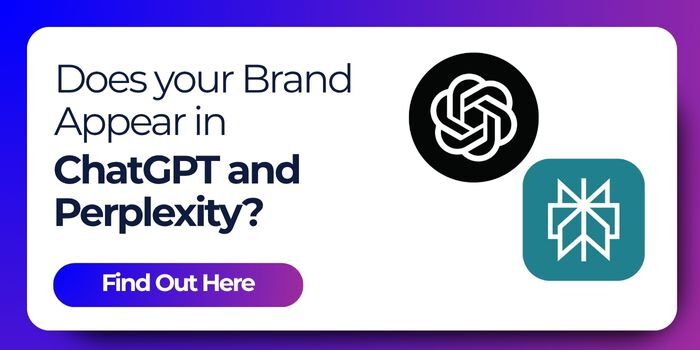From SEO to GEO is changing the way search engines work, creating a new path for digital marketing. AI search and generative engines now guide how users discover brands and information. Unlike traditional SEO, these AI platforms use data and user intent to give direct, AI generated responses.
This shift means businesses, marketers, and websites must rethink their SEO strategy, optimize content for visibility, and focus on building trust with both search engines and users.
The future of search belongs to those who understand how to adapt.
Quick Summary Powered by Addlly AI
ToggleWhat is Driving the Shift from SEO to GEO?
The shift from SEO to GEO is powered by the rise of AI search and generative answer engines. Traditional search engines focused on keywords, backlinks, and search engine optimization to deliver results.
Now, generative AI platforms, like ChatGPT, Google Gemini, etc., analyze data, user intent, and context to create AI summaries and answers. Businesses must now compete for visibility inside AI-generated responses, not just blue links.
This change means brands need new optimization strategies to reach users across AI search engines, build trust, and stay ahead of competitors in a changing digital marketing world.
Why “From SEO to GEO” is More Than Just a Trend
From SEO to GEO is not just a trend. It is a response to how AI search platforms and generative engines now decide what users see.
Unlike SEO, GEO requires businesses and brands to optimize content for AI platforms that deliver direct answers. These AI systems rely on structured data, clear language, and authority to choose what appears in AI generated answers.
As AI search continues to grow, companies who use a GEO strategy and focus on user intent, data, and context will boost their AI visibility and achieve their business goals across search engines and new AI-driven search results.
GEO vs. SEO: Key Differences Explained
| Feature | SEO (Search Engine Optimization) | GEO (Generative Engine Optimization) |
| Main Focus | Ranking in traditional search engine results page | Being cited in AI-generated answers and search platforms |
| Primary Platforms | Search engines like Google and Bing | AI search engines like ChatGPT and Perplexity AI |
| Optimization Strategies | Keywords, backlinks, technical SEO | Schema markup, direct answers, optimized content |
| User Queries | Users visit the website to get their answers | Users get direct answers from AI platforms |
| Content Structure | Built for web crawlers | Built for AI summaries and answers |
| Authority Signals | Domain authority, backlinks | Authoritative content, trusted sources, social media mentions |
| Metrics | Organic traffic, CTR, ranking | Citations in AI summaries, brand mentions |
| Required Skills | Keyword research, link building | Content clarity, structured data, topical depth |
Why the Transition from SEO to GEO is Inevitable
The transition of SEO to GEO is inevitable because AI search, generative engines, and AI platforms are changing how users access information. Search engines now give priority to AI-generated responses, which often answer user queries directly, reducing organic traffic from traditional search results.
Businesses that depend only on traditional SEO may lose AI visibility as AI systems continue to shape search. GEO requires a shift in strategy, focusing on structured data, clear content, and brand authority.
To stay relevant and meet business goals, brands must use this new paradigm in digital marketing.
Checkout our guide on: Best AI Agents for Business
GEO Optimization: How to Win in AI-Powered Search
1. Structure Content for AI Summaries and Direct Answers
Structure your content using simple sections, bullet points, and clear language. This helps AI systems understand your message and select your answers for AI summaries. Focus on answering user queries directly and include relevant data, context, and examples.
Make your content easy for AI search platforms to process so your brand appears as a reliable source in AI generated responses.
2. Optimize with Schema Markup
Schema markup tells AI platforms exactly what your content means. Add structured data to your pages so AI answer engines can easily understand, sort, and display your information in AI-generated responses.
Using schema markup in your GEO strategy helps increase AI visibility, giving your brand more opportunities to appear as a trusted source for user queries.
3. Diversify Content Formats for AI Engines
Use a mix of text, images, videos, and charts to help your content stand out in AI search. AI platforms and generative engines value multimedia integration because it matches user intent and provides answers in different forms.
Diversifying content formats not only improves AI visibility but also makes your brand more likely to be chosen for AI generated responses and summaries.
4. Build High Authority Backlinks
Earning high authority backlinks increases your brand’s trust and relevance in both traditional and AI search. Backlinks from reputable websites signal to AI systems that your content is an authoritative source.
A strong backlink profile supports your generative engine optimization strategy, boosts AI visibility, and helps your business stand out in AI-generated answers.
Read our blog on: How To Rank On ChatGPT
How AI Search Engines Select and Cite Content
AI and generative engines use advanced algorithms to review data, analyze user intent, and choose the most relevant, authoritative content for AI-generated responses. They rely on structured data, schema markup, and clear language to select what answers appear first.
Businesses that optimize content for AI search and meet these requirements have a better chance of being cited by AI platforms.
A GEO AI Agent with Addlly helps brands get selected and mentioned in AI summaries, increasing AI visibility and brand awareness across search engines.
Action Plan: Transitioning from SEO to GEO in 2025
Step 1: Audit Your Current GEO Visibility
Begin by checking your website’s performance in AI generated answers and platforms. Use GEO tools and analytics platforms to track where your brand appears. Look for gaps in AI visibility. This audit helps you understand your current position and where you need to improve for better results in AI platforms.
Step 2: Restructure Content for AI Readability and Topic Depth
Update your content with direct answers, structured data, and focused sections. AI platforms prefer information that is easy to scan and directly answers user queries. Use headings, bullet points, and topic clusters.
Make sure your content provides depth, matches user intent, and is optimized for both traditional and generative engines.
Step 3: Build Authority & Earn High-Trust Mentions
Create authoritative content and earn mentions from reliable sources in your industry. AI search platforms look for trusted brands when creating AI generated responses. Gain high-trust mentions through expert insights, data, and valuable resources.
Building authority increases your brand’s visibility, helping your content appear in AI summaries and answers across AI platforms and traditional SERP.
Step 4: Monitor, Measure, and Adapt GEO Success Metrics
Track your brand’s AI visibility using AI tools and analytics to measure performance in AI platforms. Monitor citations, mentions, and rankings in AI-generated responses. Adapt your GEO strategy as you see changes in user behavior and search results.
Check our blog on: Types and Benefits of AI Agents
How Addlly AI Can Help You With GEO
Addlly AI offers custom AI Agents that make SEO, GEO, content creation, and social media, easy for businesses of all sizes. Our GEO AI Agent handles every step of generative engine optimization, from creating structured data to boosting AI visibility.
Addlly AI uses your brand’s data and business goals to customize the AI agent. With zero-prompt workflows, Addlly AI helps you optimize content for AI-generated answers, increase authority, and save time. This way, your brand stands out in AI-driven search results.
Final Words
The move of SEO to GEO is more than a simple change in tactics. It is a response to how AI search now shapes digital marketing, brand awareness, and business growth. Businesses must focus on structured data, clear content, and authority. GEO strategies help companies reach users across new AI platforms, improve AI visibility, and achieve business goals.
Staying informed and adapting to this shift will keep your brand strong in both traditional and AI-driven search results.
FAQs – A Transition of SEO to GEO
How Do I Track My Brand Visibility in AI Results?
Do SEO Best Practices Still Matter?
Can GEO and SEO Coexist?
Will GEO Increase My Website Traffic?
How Do I Optimize for Perplexity AI?
Author
-
I'm the Head Editor at Addlly AI, where I lead all things content - from refining SEO articles and creative socials, to building scalable content systems that align with brand voice and business goals. My background spans 15+ years across tech, content strategy, and agency work, including leading content for APAC brands and shaping narratives for enterprise clients. I’ve edited for impact, managed teams, and built content that converts. At Addlly, I focus on making sure every piece - whether human-written or AI-generated - feels intentional, aligned, and clear. Good content should be easy to read, hard to ignore, and impossible to mistake for someone else’s.
View all posts



